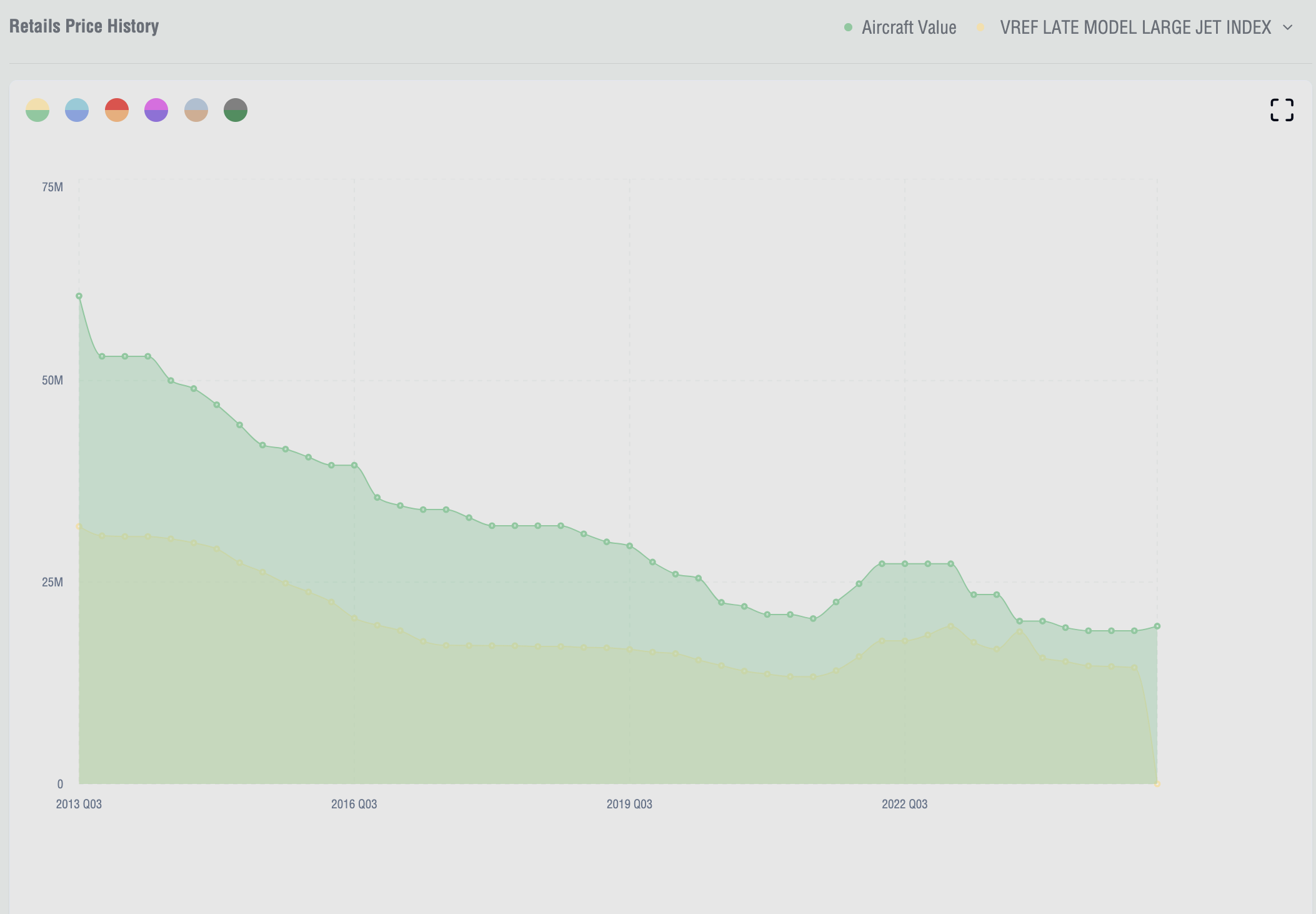100% Bonus Depreciation for Private Jets: An Aircraft Appraiser’s Take on Market Impact and Future Values
Private Jet Write-Offs, a Recap
The private jet marketplace has seen a couple versions of bonus depreciation in modern history. The first iterations were introduced following 9/11 and the 2008 recession. These early versions were fairly straightforward in their objectives, and as such, were limited in their scope and implementation. In both instances, an eligible business would be able to deduct up to 50% of the value of a new aircraft placed into service in the defined years. The idea being that this would drive businesses to acquire newly manufactured aircraft and thus spur a sector of the American manufacturing complex. Fast forward to the first Trump administration with the 2017 “Tax Cuts and Jobs Act” and we see a major shift in policy. This is the first time that 100% Bonus Depreciation is offered to eligible businesses and expanded to include new and used aircraft. This 2017 legislation had a 10 year phase-out, set to end in 2027. Beginning in 2023, the allowable deduction would decrease by 20% until ultimately phased out in 2027. Fast forward to today, Trump has signed a renewed version of this depreciation into law as part of the “One Big Beautiful Act” (OBBA). This legislation reintroduces 100% depreciation for new and used aircraft, plus additional expensing options under Section 179. This legislation did not allow ‘back-dated’ depreciation to earlier tax years but does apply to equipment placed into service after January 19, 2025. This bill does not have a sunset clause so this depreciation allowance is theoretically ‘permanent’, however, future legislation could spell a different fate.
Bonus Depreciation’s Effect on Aircraft Values
A look back to the 2017 “Tax Cuts and Jobs Act” and what followed can potentially reveal what is in store for the aircraft market today, with some pretty large asterisks.
There seems to be a sentiment that Bonus Depreciation can lead to outsized demand in the marketplace and thus drive market tightening. However, if we look back to the post-2017 tax law, that wasn’t necessarily the case. If we look at market indices (below) across some popular business aircraft classes (large cabin jet, midsize jet, and turboprops) it’s immediately clear that normal deprecation trends largely continued in the years following this tax law. Major market tightening will often be indicated by slowing/stopping or even increasing values. This was seen during the COVID years 2020-2022 but it does not appear broadly after the 17’ tax bill.
VREF Large Cabin Index
VREF Midsize Cabin Index
VREF Turboprop Index
There were certainly new aircraft buyer’s motivated to enter the market thanks to the legislation - we had a number of buyers that cited the provision as a primary reason in choosing to buy back in 2017/18/19 but I would argue that it didn’t move the needle as much as speculators may have thought. Now, the existence of 100% bonus depreciation coupled with near 0% fed interest rate and huge influx of business aviation demand throughout the COVID years did create the largest market tightening in modern history - with many markets seeing appreciation of 30/40/50% in values over a relatively short period.
That historical context can help paint a picture of what we are likely to see today.
The differences in the market of today versus the market of 2017 are fairly obvious: fed interest rates remain high, consumer sentiment remains low, and continued concerns of tariff-related inflation and general price instability has resulted in many businesses preserving cash. On the flip-side, many of the tax and spending bill’s provisions will provide direct benefit to the business community. So while the broader market could maintain low sentiment, the average business aircraft buyer could certainly be in a stronger position and with increased incentives such as the renewed bonus depreciation, be motivated to make a new purchase or upgrade.
Prior to this bill’s passage, many of the markets which we are appraising have been stabilizing. Following the 2020-2022 boom, there was a slowing, some of which was due to depleted inventory, other was due to reaching a ‘cap’ of tolerable value increases. Prices have come down, not to pre-COVID levels (for the most part) but pricing concessions have become commonplace again, as have increasing average time on market.
Of course there are so many macro-economic factors that influence market movement, especially in the broad sense that I am discussing it here, but it will be interesting to see how this legislation shifts buyer sentiment.
Will this spawn a wave of new buyers? Will not having an end date/sunset for the depreciation result in less urgency? It’s hard to say, (if I had a crystal ball, I would certainly be able to charge higher appraisal fees). What I would broadly expect is that there will be a flurry of activity in the legal/tax accounting space for interested buyers that would like to see their eligibility. I would also expect a heightened push to close eligible deals in Q4, which will probably keep the lenders and appraisers busy in a mad-dash towards the end of the year.
For all market players, it is a good time to stay up-to-date on the trends and keep a good pulse on any movement. Buyers/sellers/asset managers alike will want to stay informed; here comes my shameless pitch to give us a call if you are in need of valuation services to stay in the loop.
Author:
Cameron Tipton, ASA, ARM-MTS
accredited senior appraiser
appraisal review & management - mts



